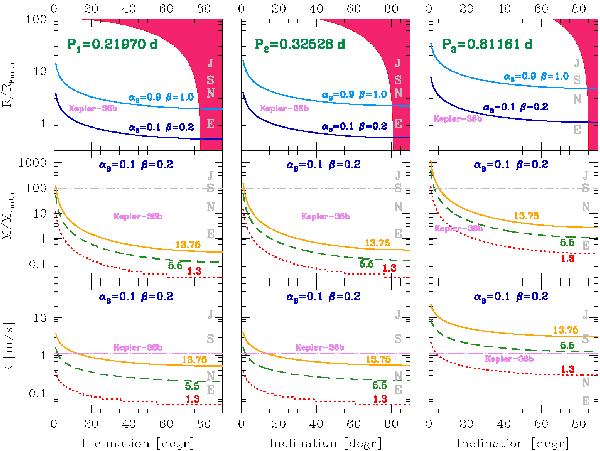Fig. 5

Radii and masses of the three planets and host-star-projected RV amplitudes as functions of the inclination. We assume a Bond albedo αB = 0.10 and an average temperature contrast between night and day sides β = 0.2; that is, approximately the values observed on Mercury. Only in the upper panels do we also show the opposite (less likely) extreme case with αB = 0.90 and β = 1.0 (isothermal surface). The shaded regions (red in the electronic version) in the upper panels represent excluded domains due to the absence of eclipses. Radii, masses, and stellar RV amplitudes for Jupiter, Saturn, Neptune, the Earth, and Kepler-36b, which has an estimated mean density of 7.5 g/cm3 (Carter et al. 2012), are indicated for comparison. The central and lower panels show three different curves with different mean densities: 1.3 (Jupiter), 5.5 (Earth), and 13.75 g/cm3 (2.5× Earth, corresponding to the mean density of a 100% iron planet with Earth radius, Valencia et al. 2010, Fig. 4). If KIC 10001893 b,c,d are the remnants of one or more massive planets, they could have a high density corresponding to the iron-rich cores of their Jovian progenitors.
Current usage metrics show cumulative count of Article Views (full-text article views including HTML views, PDF and ePub downloads, according to the available data) and Abstracts Views on Vision4Press platform.
Data correspond to usage on the plateform after 2015. The current usage metrics is available 48-96 hours after online publication and is updated daily on week days.
Initial download of the metrics may take a while.


